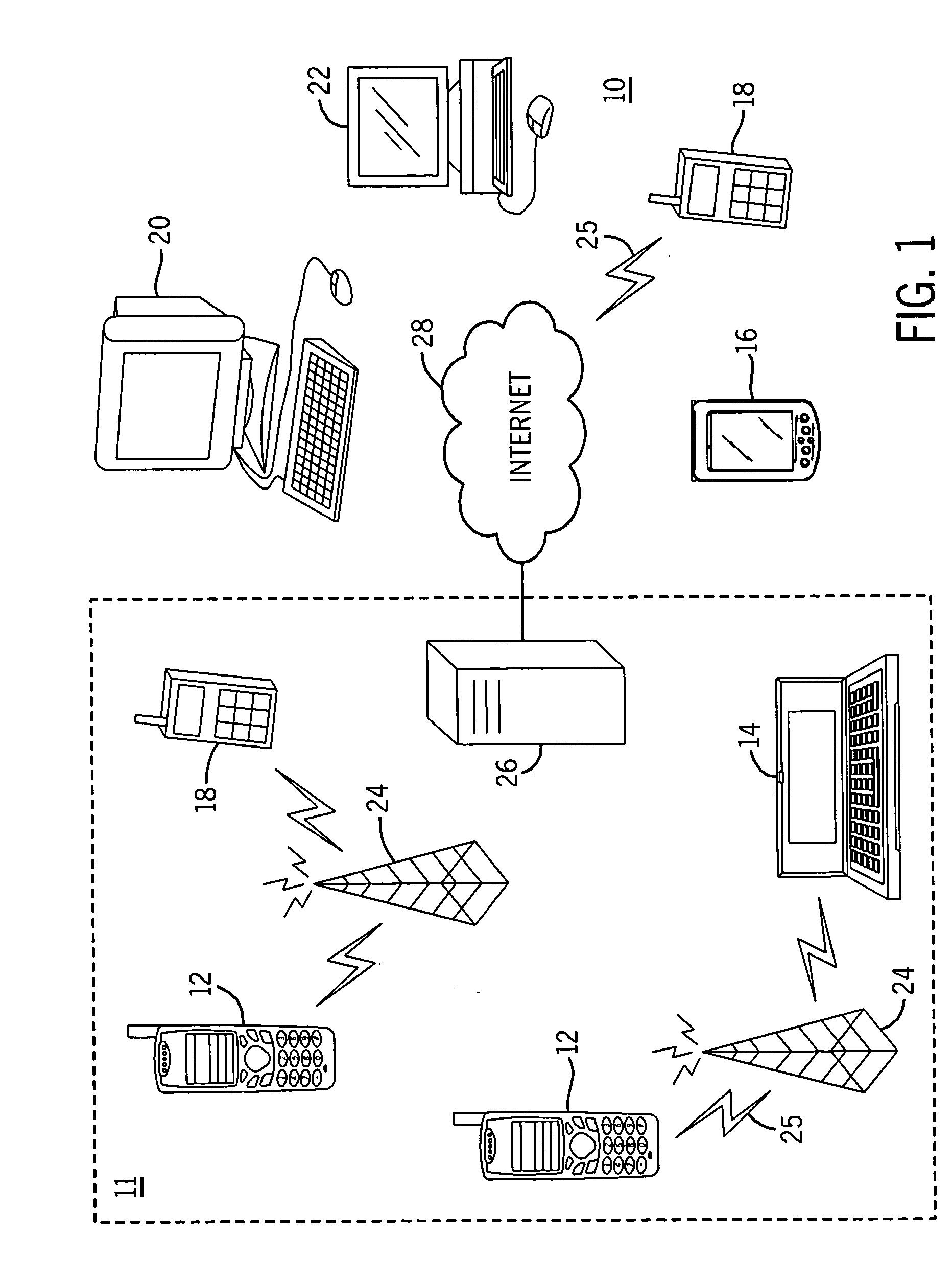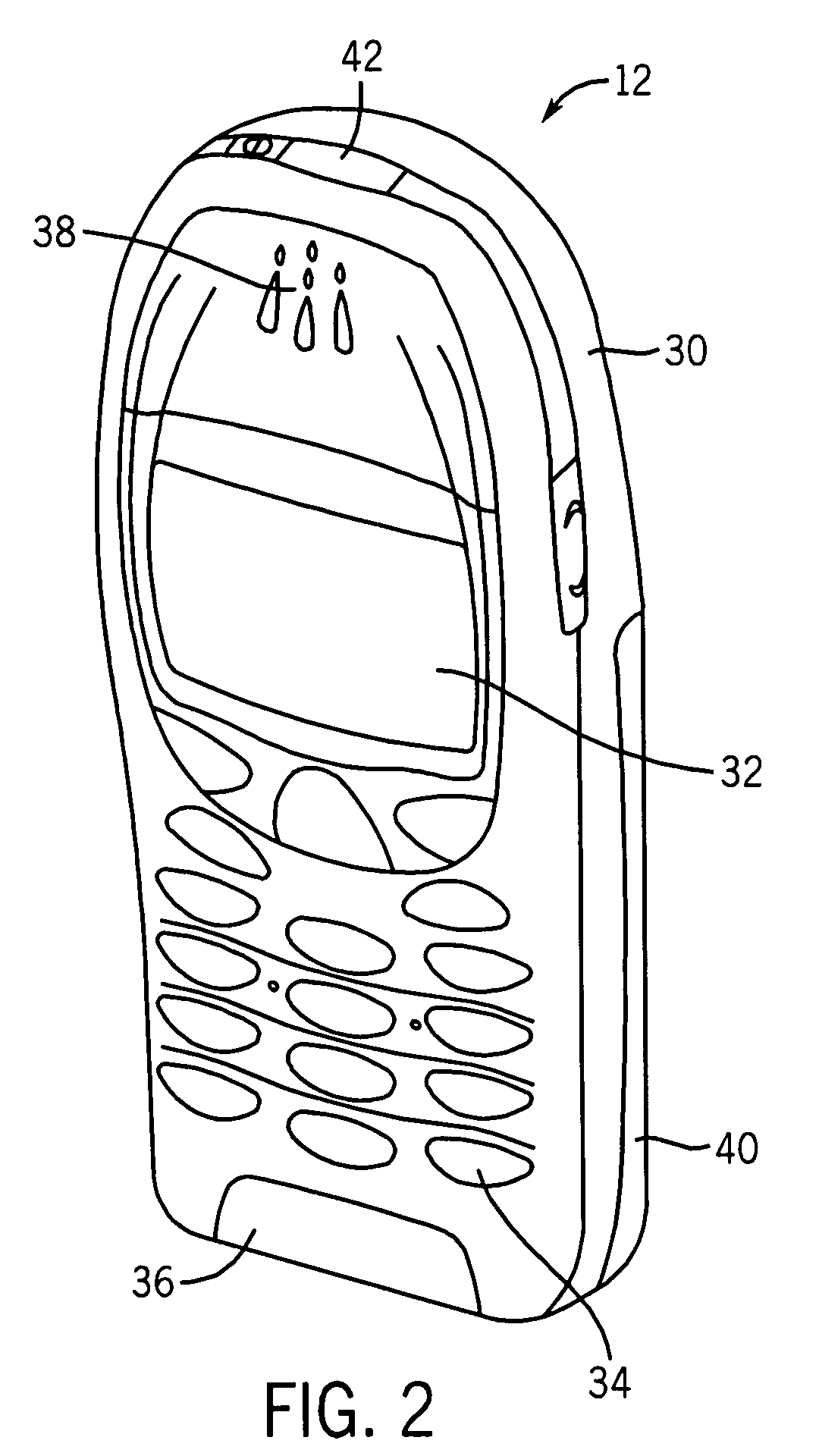Mobile network optimized method for keeping an application IP connection always on
a mobile network and application client technology, applied in the field of keep alive messaging in ip networks, can solve the problems of constant depletion of exacerbated problems, and poor battery performance, so as to reduce control signaling and traffic, improve battery life of mobile devices hosting always-on application clients, and ease the burden on application developers
- Summary
- Abstract
- Description
- Claims
- Application Information
AI Technical Summary
Benefits of technology
Problems solved by technology
Method used
Image
Examples
first embodiment
[0027]FIG. 4 shows a flow chart describing the operation of the present invention. A software API is provided which can determine various keep-alive message sending parameters at 400. The various parameters can include, but are not limited to, for example, a message sending period, a message content, and a target IP address, which can be gleaned from a mobile device. It should be noted that the message content can comprise, but is not limited to, static data, static data and random data, and parameters defining certain message content. An implementation behind the API can check if a keep-alive message sending service exists in the mobile network within which the mobile device operates at 410. If so, the keep-alive message sending parameters are given to a network element within the mobile network at 420. The network element then starts to send keep-alive messages on behalf of the mobile device at 430. It should be noted that the network element sending the keep-alive messages can be...
second embodiment
[0028]The operation of the present invention is described by the flow chart in FIG. 5. The API can optionally include a filter description which defines application server messages that should not be forwarded to the application client of the mobile device. These not-to-be forwarded application server messages are determined at 500. As before, keep-alive message sending parameters are sent to the network element at 510, and the network element sends keep-alive messages on behalf of the mobile device at 520. At 530, it is determined whether the application server is in fact sending replies to the keep-alive messages to the mobile device, where the replies are defined in the filter description. If so, at 540, transmission of these replies is prevented. It should be noted that the filter determination shown at 500 need not occur after the processes described at 510 and 520, but can be performed at any time prior to receiving at least a first keep-alive message reply. This further conse...
third embodiment
[0029]In the present invention, a mobile device 12, a network element 600, and an application server 610 are shown in FIG. 6. It should be noted that the application server 610 can comprises, but is not limited to, a standalone server, an existing network element, and another mobile device. When the network element 600 recognizes that the mobile device 12 is sending keep-alive messages 620 to the application server 610, the network element 600 can negotiate with a filter (not shown) of the mobile device 12 as described above, to filter out the keep-alive messages. Specifically, a negotiation 630 occurs between the network element 600 and the mobile device 12, where the network element 600 provides information regarding which messages and / or message types comprise keep-alive messages. The network element 600 then transmits instructions 640 to the mobile device 12 to stop sending such messages to the network element 600. The filter of the mobile device 12 can be used to determine if a...
PUM
 Login to View More
Login to View More Abstract
Description
Claims
Application Information
 Login to View More
Login to View More - R&D
- Intellectual Property
- Life Sciences
- Materials
- Tech Scout
- Unparalleled Data Quality
- Higher Quality Content
- 60% Fewer Hallucinations
Browse by: Latest US Patents, China's latest patents, Technical Efficacy Thesaurus, Application Domain, Technology Topic, Popular Technical Reports.
© 2025 PatSnap. All rights reserved.Legal|Privacy policy|Modern Slavery Act Transparency Statement|Sitemap|About US| Contact US: help@patsnap.com



